Your Persistently Dry Skin Is Trying To Send You a Message
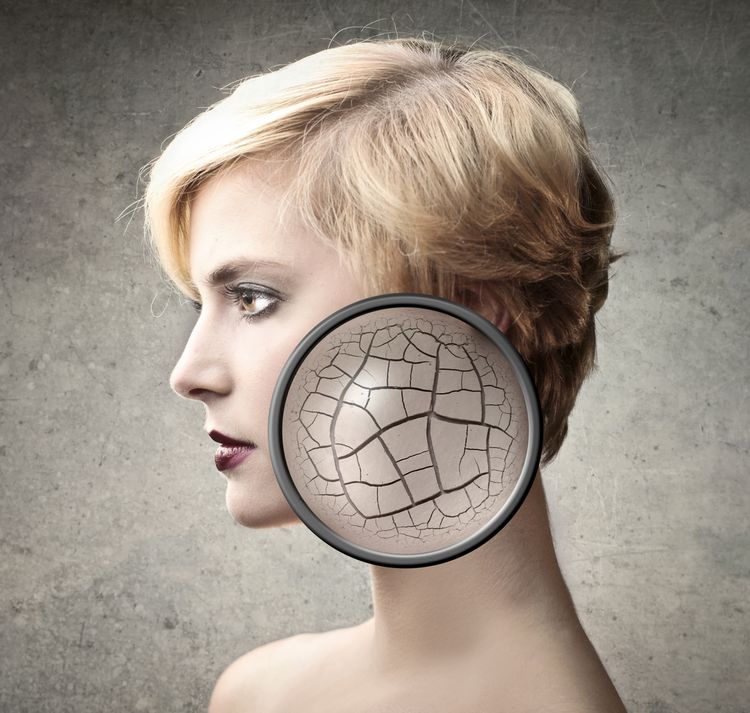
Snake skin and snow globes. At first glance they don’t seem to relate, but if you have dry skin, you know exactly what this is like. The idea of a snake shedding its skin or the little flecks that slowly fall in a shaken snow globe may be familiar to you if you suffer from dry skin.
Dry skin is very common; in fact, it’s one of the most common skin abnormalities that people see the doctor for. Some of us are more susceptible to dry skin, such as those of us with naturally dry skin, but even oily skin can get dry at times. Dry skin affects people of all ages, male or female. When it occurs it can be irritating, uncomfortable, and sometimes embarrassing. Knowing how dry skin occurs and what causes it will make it much easier to manage.
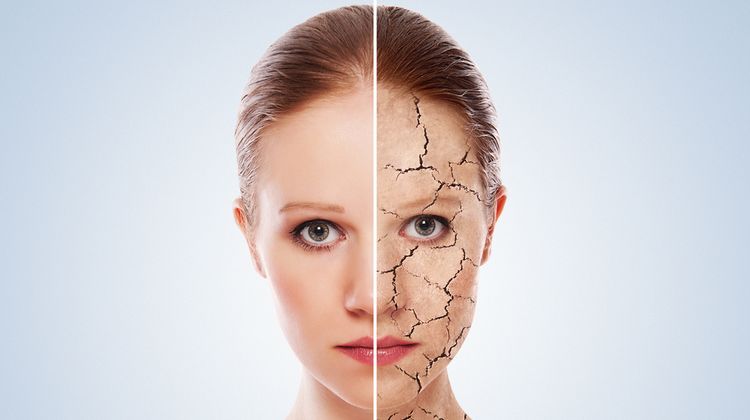
What Exactly is Dry Skin?
Dry skin, also called xerosis, is a condition identified by skin that is rough, scaling, itching, and cracking.1
Severe conditions may be characterized by intense redness and itchiness with the tendency to crack and bleed.
Dry skin can be acute (short-term) or chronic (long-term) and can affect the whole body or just specific areas, most commonly the legs, arms, hands, and abdomen.

How Does Dry Skin Occur?
Skin consists of three layers: the hypodermis, dermis, and epidermis.
- The hypodermis is the deepest part of the skin that functions as insulation and padding for the body.
- The dermis is the middle layer, which provides structure and support.
- The epidermis is the outer layer that functions as a protective shield for the body, consisting of five layers.2
In the first layer, keratinocytes (epidermal skin cells) begin developing. They move through the layers until they reach the fifth layer, called the stratum corneum, which is the outermost part of the epidermis consisting of dead, flattened keratinocytes.
Eventually the keratinocytes slough off, which is what we see when we scratch our skin. Usually the stratum corneum has a water content of 10% to 30%, giving skin its soft, smooth, and pliable appearance.3
The water comes from the air, the underlying layers of skin, and sweat. Oil produced by skin glands and fatty substances (produced by skin cells) act as natural moisturizers, allowing the stratum corneum to seal in water.
We continuously lose water from the skin’s surface by evaporation. Under normal circumstances, the rate of loss is slow, and the water is adequately replaced. When the water loss exceeds the water replacement and the water content falls below 10%, dry skin can occur.3
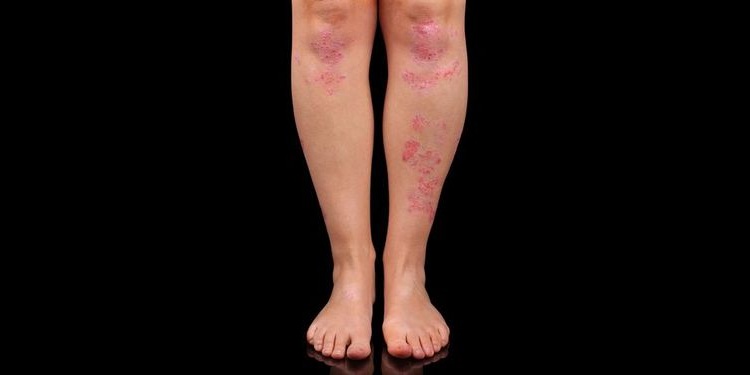
Types of Dry Skin
While typical dry skin may be reflective of your environment, hydration, or diet, extremely dry skin can be a sign of a skin condition called dermatitis.
Dermatitis refers to inflammation of the skin that can cause an itchy rash or patches of dry, irritated skin. The term eczema is often used interchangeably with dermatitis even though they are different, and describes skin when it is dry, hot, itchy, and red. There are several common types of dermatitis, including:
- Atopic dermatitis
- Contact dermatitis
- Seborrheic dermatitis
- Dyshidrotic eczema
- Nummular eczema
- Neurodermatitis
- Stasis dermatitis
- Psoriasis
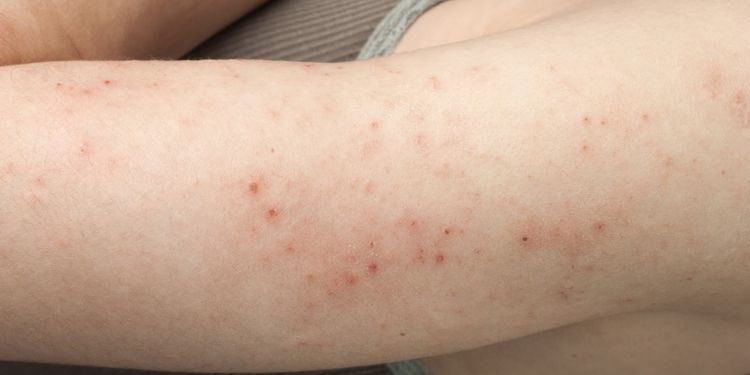
Atopic dermatitis (eczema): The skin gets red, dry, and unbearably itchy and may become raw from scratching. It often shows up on the face of babies and affects the skin creases, neck, back of knees, inside the elbows, and wrists. It can be chronic and tends to run in families with a history of allergies, asthma, and/or hay fever.4
Contact dermatitis: The skin gets red, itchy, blistery, and painful due to direct contact with a substance that the immune system knows is foreign and causes you to have an allergic reaction. Allergens include nickel, soaps, detergents, cosmetics, and poison ivy, oak, or sumac.5
Seborrheic dermatitis: The skin has red, oily, scaly patches on the scalp, face, and sometimes other parts of the body caused when your skin produces too much oil. It often starts on the scalp as dandruff in adults and as cradle cap in infants.4
Dyshidrotic eczema: The skin on the palms of hands and soles of the feet becomes irritated and can cause a burning or itching sensation and a blistering rash. The cause is unknown, but people with this type of eczema tend to have a history of atopic dermatitis as well.4
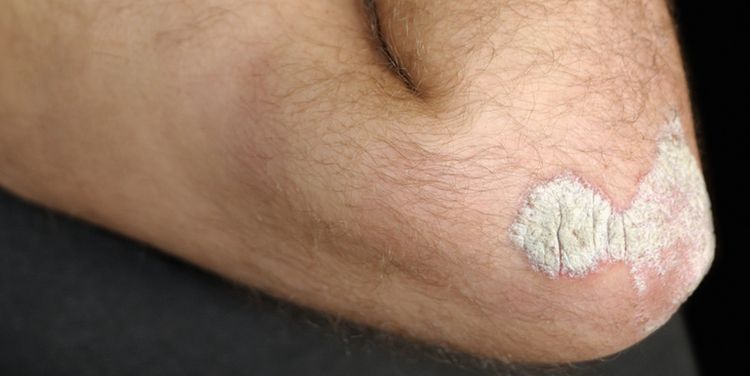
Nummular eczema: The skin has coin-shaped marks of irritation. The spots can be crusted, scaling, and very itchy. The exact cause is unknown, but dry skin is the most common feature in people with this condition.4
Neurodermatitis (lichen simplex chronicus): An autoimmune condition where the skin on the scalp, neck, ankles, lower legs, wrists, or forearms has scaly patches caused by repeated rubbing or itching over time. It may begin with an insect bite or a particular material but becomes a habit when the more you rub or scratch the area, the itchier it gets. It is associated with other skin conditions like atopic eczema.4
Stasis dermatitis: The skin on the legs becomes discolored, thick, itchy, and flaky, caused by poor circulation from the lower legs to the heart. It usually affects people with varicose veins.4
Psoriasis: An autoimmune condition that causes skin cells to build up and form dry, itchy, scaly patches of skin, usually on your elbows, knees, scalp, face, palms, and feet.

Root Causes of Dry Skin
When lifestyle modifications fail to remedy your dry skin, it could be due to an underlying problem that should be investigated further. Most often, there are several of these underlying causes of dry skin occurring together. They include:
- Gut dysfunction
- Dysbiosis
- Poor diet
- Dehydration
- Stress
- Hormone imbalance
- Toxins

Root Cause of Dry Skin: Gut Dysfunction
Gastrointestinal (GI) dysfunction often involves conditions that have symptoms that aren’t confined to the GI tract, including skin rashes and eczema.9
Leaky gut, or intestinal hyperpermeability, occurs when the intestines become inflamed and cause the gut lining to become more porous, which allows foreign particles to seep through. The foreign particles, or antigens, react with immune cells, causing inflammation.10 The inflammation is not only in the gut, but system-wide, causing symptoms such as skin issues, brain fog, muscle aches and joint pain, and autoimmune conditions.
Dr. Liz Lipski, PhD, CCN says, “A skin rash or eczema is a sign that the body is trying to slough out toxins. It’s trying to eliminate a problem the best way it knows how.”11 There are four main causes of leaky gut:
Dietary sources: Things such as food sensitivities and allergies, nutrient deficiencies, and excessive sugar and/or alcohol consumption.
Chronic stress: Weakens your immune system over time, which decreases your ability to fight off foreign invaders like pathogenic bacteria, parasites, fungi, and viruses.
Toxin overload: Can occur from the use of medications, non-steroidal anti-inflammatory drugs, antibiotics, dysbiosis, and chemical and heavy metal exposure.
Dysbiosis: Occurs when there is an imbalance of good and bad organisms in the gut.
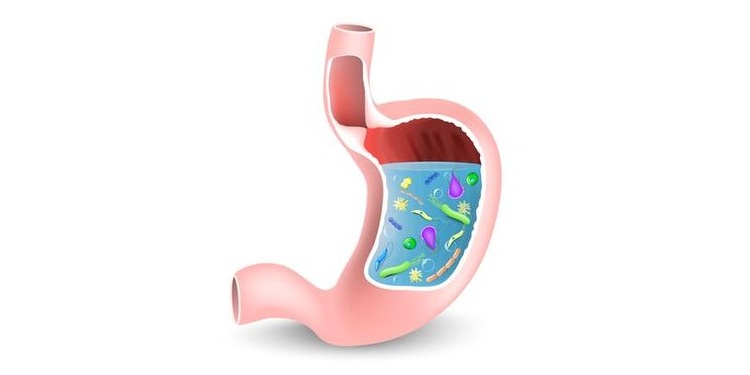
Root Cause of Dry Skin: Dysbiosis
Dysbiosis is a common condition that occurs when there is an imbalance in beneficial microorganisms versus detrimental microorganisms in the gut.
A healthy gut has abundant bacteria and some yeast in the large intestine and some bacteria in the small intestine that are all important to our survival, as they help us digest and absorb nutrients, support our immune function, and help control inflammation.
Imbalances come in many forms, but some of the common ones include a general lack of beneficial microbes; SIBO, or small intestinal bacterial overgrowth, which occurs when there is inappropriate growth of bacteria in the small intestine; Candidiasis, a yeast overgrowth that suppresses immune function; H. Pylori, a bacterial infection of the stomach or intestines that suppresses acid production; or parasitic infections including amoebas, cysts, protozoa, and other pathogens that irritate the intestinal lining.

The beneficial bacteria modulate the immune system’s inflammatory response and help prevent pro-inflammatory agents from entering the bloodstream. When there’s a disparity in the gut flora, the barrier function of the intestines breaks down (leaky gut), resulting in immune dysregulation, which leads to further dysbiosis, creating a vicious circle.20 This can manifest as itchy, inflamed, dry skin.
Dysbiosis is caused by poor diet, chronic stress, overuse of medications, infections, and inflammation. Symptoms of dysbiosis include gas and bloating, nutrient deficiencies, recurrent yeast infections, fatigue, and dry skin. Chris Kresser says, “If you want to heal your skin, you have to heal your gut.”21 He explains that when the gut flora is altered, so are the glands that produce oil, which increases the risk of sebaceous gland diseases including seborrheic dermatitis.

Root Cause of Dry Skin: Diet
A variety of dietary factors contribute to the development of dry skin. The underlying causes are generally from lack of nutrients and inflammation.
Nutrient deficiencies: Poor gut function can lead to poor nutrient absorption from our food. Without adequate digestive function, foods are not properly broken down and the nutrients are not absorbed.
Common nutrient deficiencies associated with dry skin include omega-3 fatty acids, vitamins A and C, and zinc. Vitamin A contributes to cell growth and repair, particularly in skin cells. Lack of vitamin A can cause dry skin, hair, and eyes. According to Chris Kresser, rough, dry skin is a common sign of a vitamin A deficiency.12
Zinc: Is involved skin cell renewal. A deficiency can manifest as eczema, seborrheic dermatitis, and slowed wound healing.12 Vitamin C plays a role in collagen synthesis and is vital for skin health. A deficiency can cause scurvy, which is displayed by a build-up of keratin, producing rough, dry skin. Omega-3 fatty acids can help reduce inflammation. Chris Kresser notes that atopic dermatitis has been shown to be positively affected by supplementation with omega-3 fatty acids.13 A nutrient-lacking diet consisting of processed foods will also cause these deficiencies.
Alcohol: Excessive alcohol consumption compromises gut health and can cause nutrient deficiencies.
Dehydration: A large proportion of our body, including our skin, is made up of water. Without adequate water, our skin becomes dehydrated, dry, and more prone to damage.
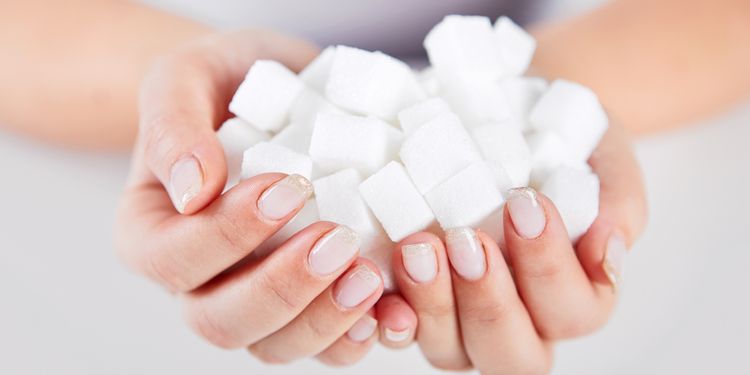
Food sensitivities/allergies: When partially-digested food particles pass through a leaky gut, food sensitivities can occur. The immune system perceives the undigested particles as invaders and mounts an immune response that causes inflammation.
The most common reaction-producing foods include dairy, eggs, peanuts, soy, corn, and gluten/wheat. Every time the offending food is ingested, the immune system reacts, resulting in a food allergy or sensitivity. Symptoms of a food allergy are generally more severe than a sensitivity. Symptoms of both can include skin irritations, rashes, hives, stuffy/runny nose, swelling, wheezing, nausea, or heartburn, while allergies may produce more severe symptoms such as vomiting, trouble breathing, fainting, and when severe, anaphylaxis.
Sugar: Sugar and refined carbohydrates (which break down into sugars) cause sudden spikes in blood sugar levels, resulting in the release of insulin into the bloodstream that causes a burst of inflammation throughout the body. When sugar is in circulation, it can bind to proteins such as collagen (the structural component of skin, bones, and muscles) in a process called glycation, which disrupts the structure of the protein. As a result, collagen loses its elasticity, becomes rigid, and produces wrinkles, dryness, and loose skin.14
Excessive sugar consumption can also cause hyperglycemia, which is associated with thyroid disorders, hormone imbalances, diabetes, stress, and medications. Symptoms of hyperglycemia include an increase in hunger, thirst, and urination, which causes your body to lose fluid, including the moisture from your skin.

Root Cause of Dry Skin: Stress
Stress causes dry skin by impairing the integrity and protective function the stratum corneum, exacerbating skin conditions, including atopic dermatitis.15
Prolonged stress raises the adrenal hormone cortisol, which changes our immune system’s ability to respond quickly, affects our ability to heal, and contributes to leaky gut.
Robb Wolf explains stress as “a specific response by the body to a stimulus, such as fear or pain, that disturbs or interferes with normal physiological equilibrium. Stress can be physical, mental, or emotional strain or tension and can be an occurrence (chronic or acute) or a causative factor in a state of disease.”16
During stress, our body’s natural balance (homeostasis) slows down, including our metabolism, immune function, and the ability to withstand illness, injury, and stress, resulting in a build-up of toxins that cause fatigue, poor sleep, mood swings, muscle and/or joint pain, constipation, and dry skin. Stress also contributes to inflammation.
Chronic stress can cause increased inflammation, which leads to DNA damage, impaired immune function, and delayed skin healing.17 This all contributes to accelerated aging, causing loss of skin tone, an increase in dryness, lines, and wrinkles, and may worsen skin conditions like psoriasis and eczema.
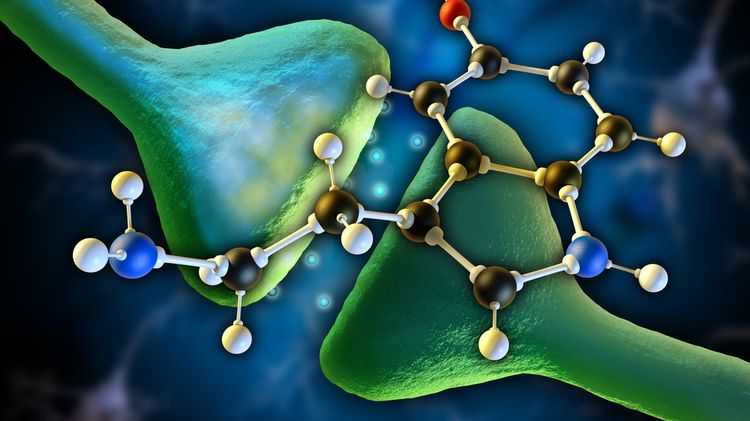
Root Cause of Dry Skin: Hormone Imbalances
Intense or prolonged stress causes an immediate increase in cortisol levels, which forces the adrenals to work in overdrive. When they remain in a constant state of amplification, they can weaken, resulting in a condition known as adrenal fatigue. This condition leads to low cortisol and imbalanced hormones.
Mark Sisson of Mark’s Daily Apple notes that fluctuations in hormones can promote skin conditions like dry, flaky skin, oily skin, acne, and premature aging.18 Weak adrenals can cause a hormone imbalance known as hypothyroidism (low thyroid) that contributes to decreased metabolism and growth from low production of thyroid hormone. Dry, thin, itchy skin is associated with hypothyroidism.
Stress and age also cause estrogen to decline, especially in post-menopausal women. In the skin, estrogen plays a major role in collagen production and water content. Estrogen deficiency decreases elasticity, increases dryness, and increases wrinkles. Estrogens also have anti-inflammatory properties; a decline of these hormones can lead to increased inflammation, thereby intensifying inflammatory skin conditions like eczema and psoriasis.

Root Cause of Dry Skin: Toxins
We are surrounded by toxins in our environment. They are in common industrial pollutants, agricultural pesticides, heavy metals, personal care products, cleaning products, and refined or processed foods.
When our bodies get overloaded with toxins, we may experience total load, which is what Dr. Hyman defines as “the total amount of stressors on your system at any one time.”19
Common signs of chronic toxicity include fatigue, muscle aches and pains, constipation, diarrhea, and skin problems such as rashes and eczema. Rashes and eczema develop because your skin is a primary detoxification organ and your body is trying to eliminate toxins through any route it can. This often generates an immune response and inflammation, which results in rashes, irritation, and dry skin.
Toxins can also include medications. Dry skin is a side effect of some commonly-prescribed drugs, including cholesterol-lowering drugs and retinoids. Dry skin can also be a side effect of diuretics.
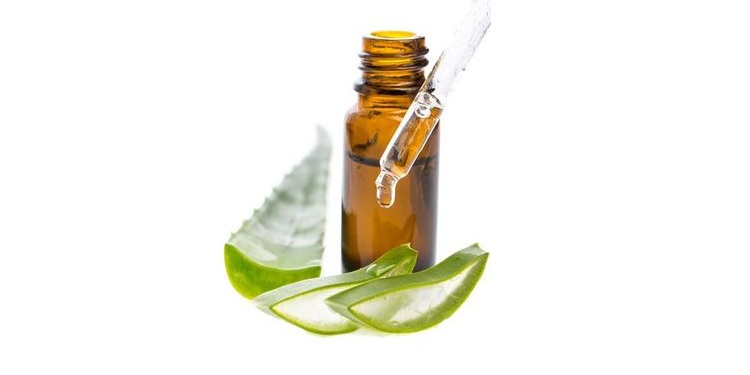
Natural Relief from Dry Skin
Simple lifestyle remedies can help to keep skin from drying out.1
Shower every other day in order to help retain the natural oil in the skin.
Choose a short, warm shower (five to ten minutes). Long, hot showers increase the loss of oils from the skin and can worsen dryness. Moisturize immediately after you get out.
Use moisturizing soaps and avoid anti-bacterial soaps, which contribute to dryness.
It seems counterintuitive, but using oil to cleanse the skin (coconut or jojoba) is even better than soap. It will soothe dryness and improve texture.
Coconut oil is a great natural moisturizer useful in treating dry and irritated skin. It can strengthen and hydrate skin and connective tissues, exfoliate the outer layer of dead skin cells, and soothe inflammation.
Plant oils absorb easily in the skin and contain antioxidant and anti-inflammatory properties that nourish and protect dry skin. They also contain fatty acids that soothe dry skin. Examples include shea butter, olive oil, jojoba oil, aloe vera, almond oil, castor oil, and beeswax.
Honey is loaded with antioxidant, antimicrobial, and humectant properties that help lock in moisture to make your skin soft and smooth. It also contains vitamin A, which helps in the development in skin cells.
Avoid scrubbing and scratching your skin, which will further dry out your skin.
Use a humidifier in your home to maintain the moisture in the air.
Drink plenty of water to avoid dehydration.
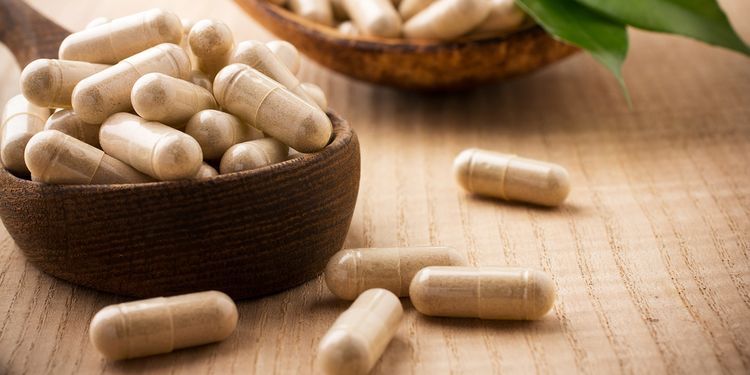
In addition to lifestyle remedies, there are natural supplements that can promote healthy skin.
Chris Kresser, M.S., LAc recommends vitamins A, C, and zinc because these are the nutrients that are known to play a role in the proper growth, structure, and immunity of the skin.6
Dr. Andrew Weil, M.D. suggests black currant oil or evening primrose oil to provide gamma-linolenic acid (GLA), which helps restore moisture to your skin, and flax seeds or fish oil, which provide omega-3 fatty acids that aid in flaking from dandruff associated with eczema and seborrhea.7
Along with fish oil and GLA, Dr. Hoffman, M.D. also recommends consuming coconut oil for itchy, irritated skin associated with atopic dermatitis.8
Implementing any or even several of the suggestions that we’ve provided should get you on the path toward improved skin hydration.
